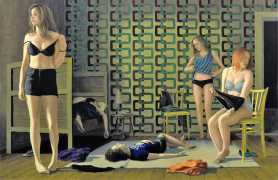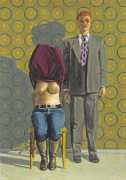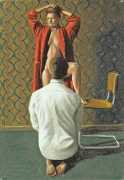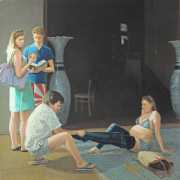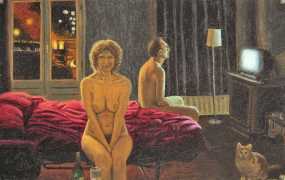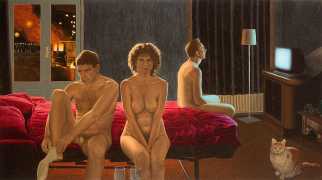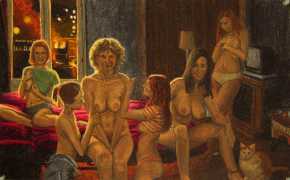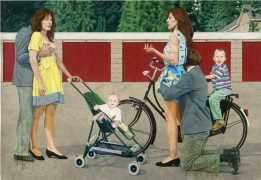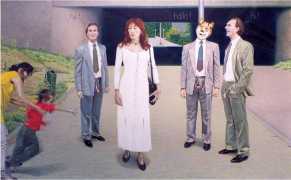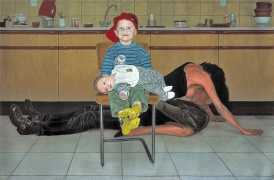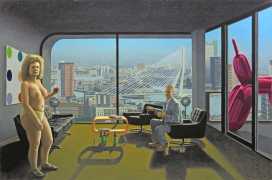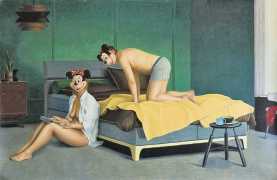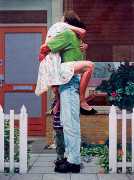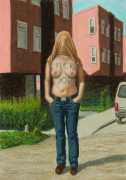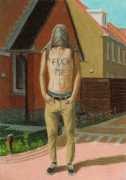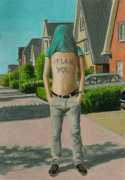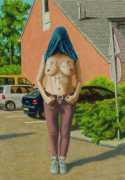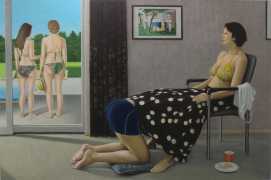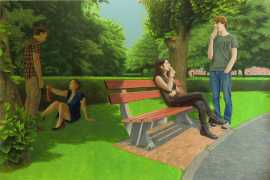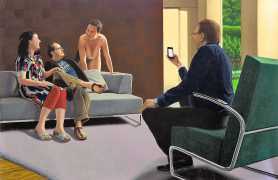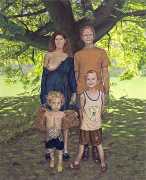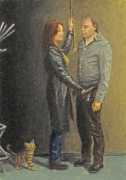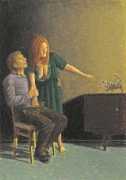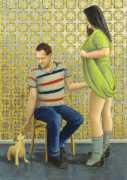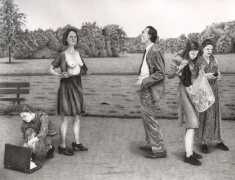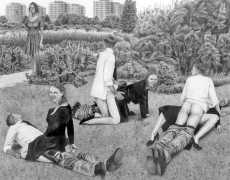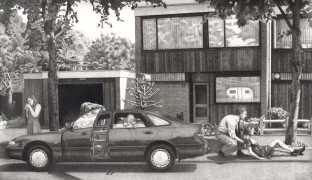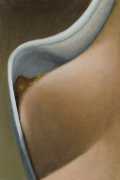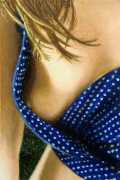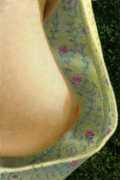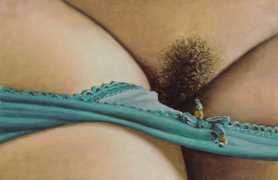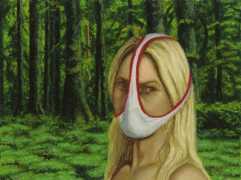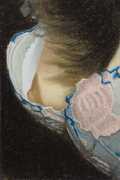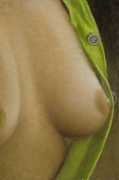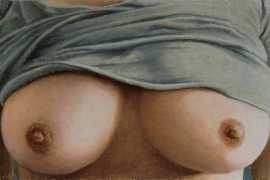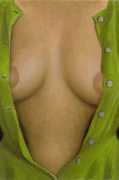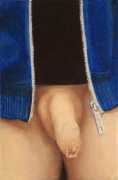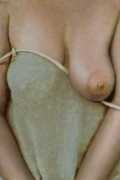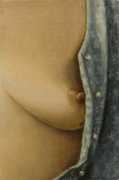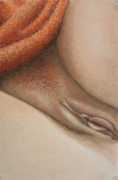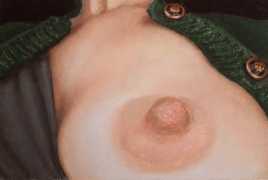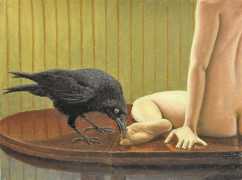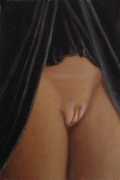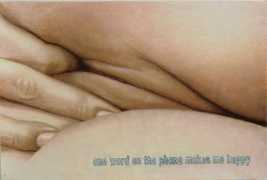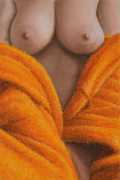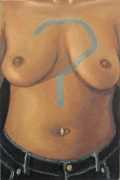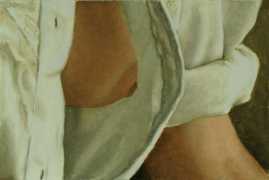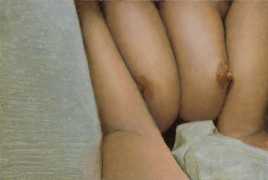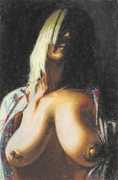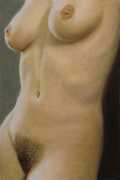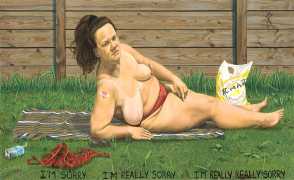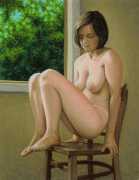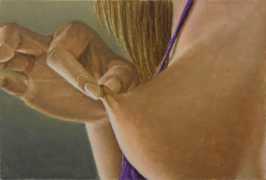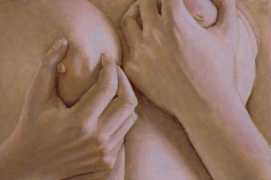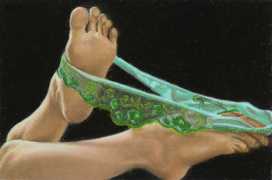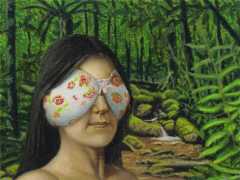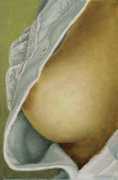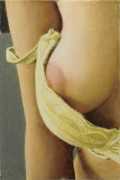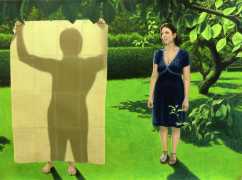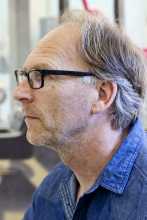 The innovate and thought-provoking Dutch artist Jans Muskee deserves to be much better known outside – and inside – his native country. His impressive realistic style, created with rich oil pastels, questions important issues around desire and fantasy in the modern world of consumerism, sexual fantasy and ‘family values’.
The innovate and thought-provoking Dutch artist Jans Muskee deserves to be much better known outside – and inside – his native country. His impressive realistic style, created with rich oil pastels, questions important issues around desire and fantasy in the modern world of consumerism, sexual fantasy and ‘family values’.
Muskee grew up in in one of the first residential areas in the planned town of Nieuw Amsterdam, now part of Emmen in the north-east Netherlands. As he explains, ‘Unlike many people, the new housing estate was for me a place of hope, where people start over. I come from a working-class family; my parents first lived with my father’s parents, later with other people, but they had their first house in the new housing estate. Everyone there appeared to be doing the same thing, but in truth they were all starting their own adventures. There was emptiness at the end of the street where the houses weren't ready yet. As kids, we scoured unfinished houses, played with the building materials. It was uncultivated, full of weeds. We fried snails in a pan.’
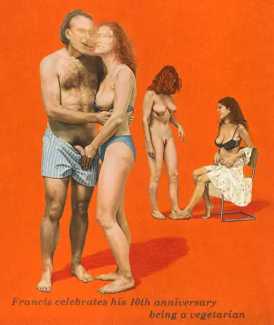
Once out of that newly-built house, Muskee studied at the Academie voor Beeldende Kunsten Minerva (Minerva Academy for Visual Arts) in Groningen and the Rijksacademie van Beeldende Kunsten (State Academy of Visual Arts) in Amsterdam. He found the academic training too much of a straitjacket, and his ideas for experimental art undervalued and misunderstood. In 2004, after fifteen years in Amsterdam, he moved back north to be near his children, and set up his studio in Haren, a southern suburb of Groningen.
In 1996 he started experimenting with the large life-size drawings which are now his trademark, and moved from paints to oil pastels, which he now uses almost exclusively, building the work in layers of bright colours to produce something approaching photorealism. In recent years he has also experimented with montages and three-dimensional constructions incorporating drawings and related elements.
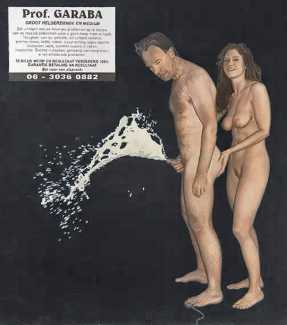
In 2015 Gerrit Brand interviewed Jans Muskee for Stad magazine (you can read the whole piece, in Dutch, here). He writes, ‘There is much to see in Muskee’s drawings. Jans Muskee tells stories, and if he had not become a visual artist he could also have been a writer. Just like a writer who spends two months working on a story, a single drawing can take two months to complete. He usually takes photographs as his starting point, realising an idea with the help of photography. Sometimes he stages the situations himself with models, but often he sees a certain image in a newspaper or magazine and uses that as a source of inspiration.’
When asked about his perspective on the erotic elements of his work, Muskee explains, ‘I want to involve the viewer in a shared exploration of what erotic means and is. I’m not an artist who knows exactly in advance what I’m trying to say. The story develops gradually. I have to find out for myself too. I look for the everyday in the artificial and for the artificial in the everyday. It’s all about what you see,’ he adds, ‘that’s all, but I hope that people who look at my work will see more and more in it. That’s the power of the work, you have to be able to step into it as it were. My drawings are a voyage of discovery.’
Jans Muskee’s website is here, where you can see much more of his work.
We would like to thank our Russian friend and contributor Yuri for introducing us to the work of this artist and for supplying many of the images.


